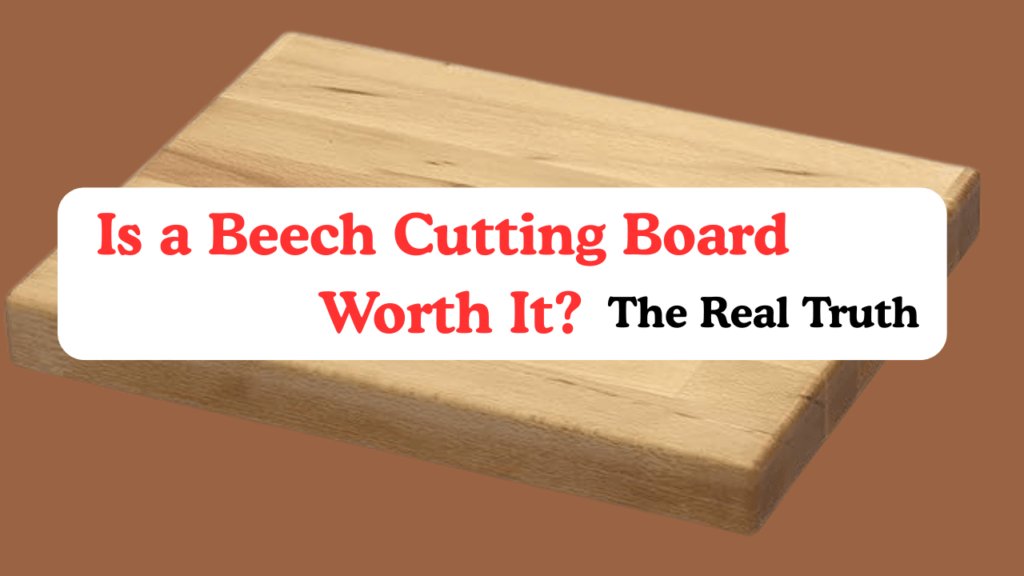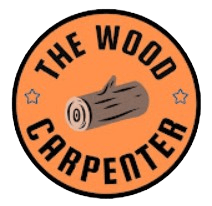
A beech cutting board is considered one of the most practical and reliable choices for everyday kitchen use. Known for its durability, natural antibacterial qualities, and timeless beauty, beech has been trusted for generations in both home and professional kitchens.
When compared with other popular materials such as maple, walnut, or bamboo, beech is often chosen for its balance of affordability, performance, and hygiene.
What Is a Beech Cutting Board ?
A beech cutting board is crafted from European beech wood, a hardwood widely used in kitchenware due to its dense grain, medium hardness, and light-colored appearance. Beech is valued for its ability to withstand heavy chopping, slicing, and dicing while still being gentle on knife blades.
Its smooth, fine grain structure reduces the risk of deep scratches and minimizes bacterial buildup, making it an excellent choice for food preparation.
Why Beech Wood Is Good for Cutting Boards
1. Durability and Hardness
Beech wood is recognized as a strong and durable material. Its dense grain allows it to resist dents and knife marks better than many softer woods.
Unlike bamboo, which can be overly hard and cause knives to dull quickly, beech provides a balanced level of hardness that ensures long-lasting use while preserving blade sharpness.
2. Hygiene and Antibacterial Properties
The natural antibacterial qualities of beech make it safer than plastic cutting boards, which often trap bacteria in scratches.
Thanks to its fine and closed grain structure, moisture and food particles are less likely to penetrate deeply, reducing the risk of contamination.
3. Moisture Resistance
Beech has been praised for its ability to resist moisture when maintained properly. Unlike bamboo or cheap softwoods that are prone to warping or cracking, a beech cutting board remains stable when regularly oiled and cared for.
4. Aesthetic Value
Beech wood provides a light, clean, and elegant appearance that fits perfectly in both modern and traditional kitchens. Its neutral tone makes it a versatile choice, and when paired with darker inlays like walnut, it creates a visually stunning and professional finish.
5. Eco-Friendly and Affordable
Beech is abundant in Europe and it is often harvested from sustainably managed forests, thus making it as an environmentally responsible choice. Compared to maple or walnut, beech boards are typically more affordable while still offering premium quality.
Beech Cutting Board vs. Other Popular Woods
Beech vs. Maple cutting board: Maple is slightly harder and often admired for its luxurious look, but beech offers similar benefits with a finer grain and lower price point. Beech is also less porous, which enhances hygiene.
Beech vs. Bamboo cutting board: Bamboo is harder and lighter, but its excessive hardness can dull knives quickly and cause cracking due to moisture. Beech provides better knife protection and stability.
Beech vs. Walnut cutting board: Walnut is prized for its dark, rich beauty but comes at a higher cost. Beech provides a more affordable alternative with greater availability.
Care and Maintenance of Beech Cutting Boards
A beech cutting board can last for many years if it is properly maintained. The following practices are recommended:
Cleaning: Hand-wash the board using warm, soapy water. Dishwashers or prolonged soaking should be avoided, as excess water exposure can cause warping.
Drying: The board should always be dried thoroughly after washing.
Oiling: Regular treatment with food-grade mineral oil or a beeswax and oil blend should be applied. This prevents drying, cracking, and improves moisture resistance.
Usage Tip: Both sides of the board should be used to prevent uneven wear. One side can be reserved for food preparation and the other for serving.
Why Beech Cutting Boards Are Loved by Chefs and Home Cooks
In professional kitchens, beech boards are valued for their durability and hygiene. Home cooks also favor them for their affordability, ease of maintenance, and classic look. Their natural antibacterial surface provides extra reassurance when preparing meats, vegetables, or fruits.
Final Thoughts
A beech cutting board is an investment in both style and function. Its balance of hardness, hygiene, affordability, and eco-friendliness makes it one of the best all-around options for kitchens of every kind. When properly cared for, it can provide years of reliable service while maintaining its clean, elegant appearance.
For anyone searching for a cutting board that offers durability, antibacterial protection, and timeless beauty, beech wood remains one of the smartest and most sustainable choices available today.
Frequently Asked Questions (FAQs) About Beech Cutting Boards
1. Is beech wood good for cutting boards?
Yes, beech wood is widely considered a good choice for cutting boards. It is durable, naturally antibacterial, gentle on knives, and resistant to scratches and dents when properly maintained.
2. Are beech cutting boards safe for meat?
Beech cutting boards are safe for meat when cleaned and dried correctly after each use. Their fine grain and natural antibacterial qualities help reduce bacterial growth. However, it is often recommended that separate boards be used for raw meat and vegetables to avoid cross-contamination.
3. Does a beech cutting board warp easily?
Beech cutting boards can warp if they are exposed to excessive moisture or placed in dishwashers. To prevent this, boards should be hand-washed, dried immediately, and oiled regularly.
4. Which is better: beech or maple cutting board?
Both woods are excellent, but the choice depends on preference. Maple is slightly harder and has a luxurious appearance, while beech is more affordable, less porous, and equally durable when cared for.
5. Is beech better than bamboo for cutting boards?
Yes, in most cases. Beech is gentler on knife edges and less prone to cracking. Bamboo is harder and lighter but can dull knives faster and may warp with repeated water exposure.
6. How should a beech cutting board be maintained?
A beech cutting board should be hand-washed with warm soapy water, dried thoroughly, and never soaked. It should also be oiled regularly with food-grade mineral oil or a beeswax blend to maintain its strength and moisture resistance.
7. Are beech cutting boards eco-friendly?
Yes, beech is considered eco-friendly. It is widely available in Europe and often harvested from sustainably managed forests, making it an environmentally responsible choice.

